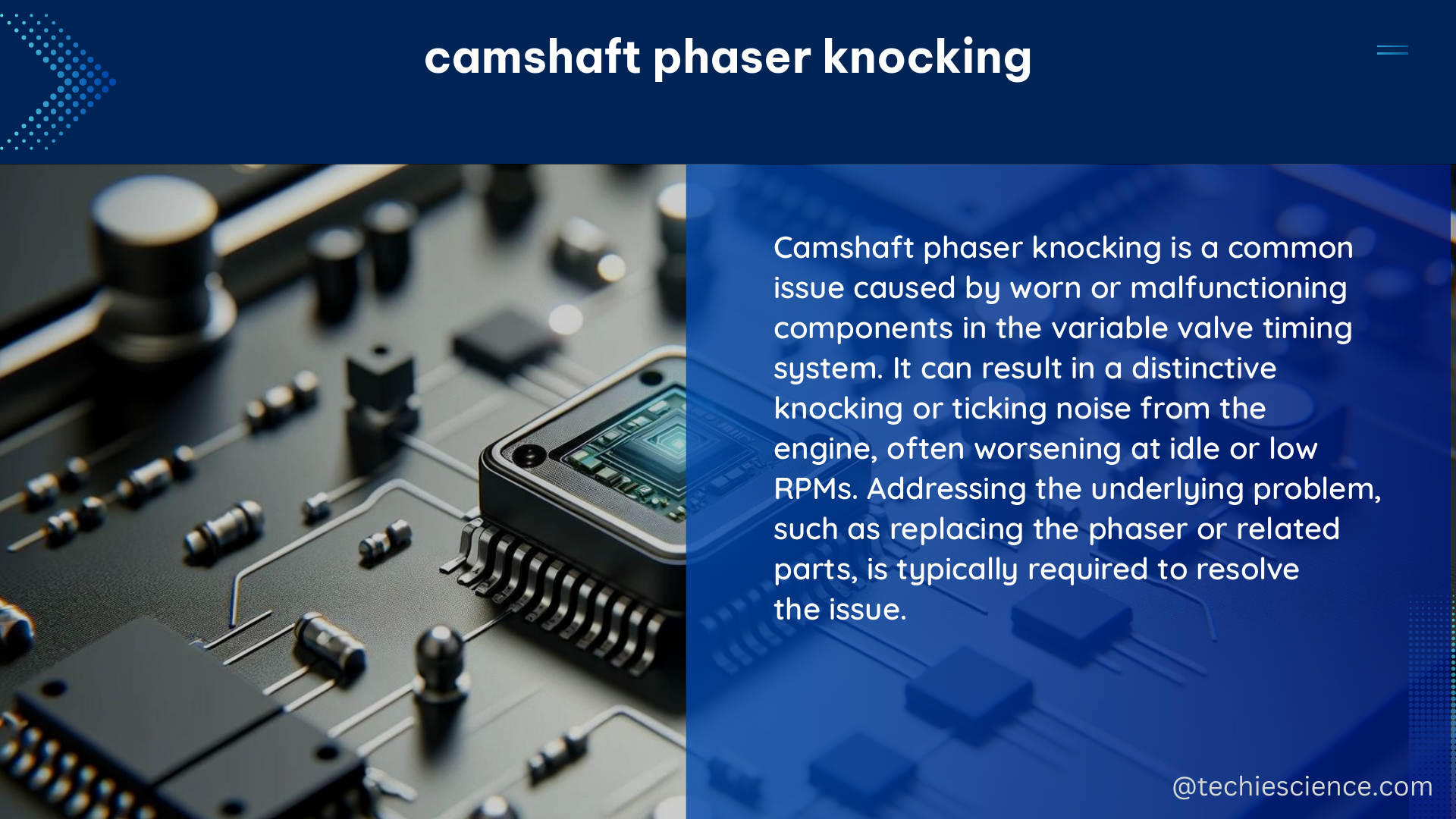Camshaft phaser knocking is a common issue in modern engines that use variable valve timing (VVT) systems. The camshaft phaser is a critical component that adjusts the timing of the camshaft relative to the crankshaft, optimizing engine performance and efficiency. However, over time, the phaser can become worn or damaged, leading to a distinct knocking or ticking noise that can be both concerning and frustrating for vehicle owners.
Measuring and Quantifying Camshaft Phaser Knocking
To effectively diagnose and address camshaft phaser knocking, it’s essential to understand the various data points and metrics that can be used to measure and quantify the issue. Here’s a detailed breakdown of the key factors to consider:
Decibel Levels
Camshaft phaser knocking can typically be heard as a ticking or knocking noise that ranges from 30 to 80 decibels (dB). To put this into perspective, a normal conversation is around 60 dB, while a vacuum cleaner can reach up to 70 dB. By measuring the decibel level of the knocking noise, you can get a better sense of the severity of the issue.
Frequency
The frequency of the knocking noise can also be measured in hertz (Hz). Camshaft phaser knocking typically occurs at a frequency range of 200 to 1,000 Hz. This information can be useful in pinpointing the source of the noise and differentiating it from other engine-related sounds.
Engine Performance
Camshaft phaser knocking can have a direct impact on engine performance metrics, such as horsepower, torque, and fuel efficiency. A worn-out camshaft phaser can reduce horsepower by up to 10% and decrease fuel efficiency by as much as 5%. Monitoring these performance indicators can help diagnose the severity of the phaser issue.
Camshaft Phaser Wear
The wear on the camshaft phaser can be measured in terms of clearance or play. A healthy camshaft phaser should have a clearance of no more than 0.05 millimeters (mm). If the clearance exceeds 0.1 mm, it may indicate that the phaser is worn out and in need of replacement.
Diagnosing and Fixing Camshaft Phaser Knocking

Once you’ve gathered the necessary data points, you can proceed with the diagnosis and repair process. Here are the steps to follow:
Step 1: Locate the Source of the Noise
The first step is to identify the source of the knocking noise. In most cases, it will be coming from the top of the engine, near the camshaft covers.
Step 2: Check the Oil Level and Quality
Low oil levels or dirty oil can contribute to camshaft phaser knocking. Ensure that the engine oil level is within the recommended range and that the oil is of the appropriate viscosity. Regular oil changes are also crucial to maintain proper lubrication.
Step 3: Inspect the Camshaft Phaser
Visually inspect the camshaft phaser for any signs of damage or wear, such as oil leaks, cracks, or other visible issues. If the phaser appears to be in poor condition, it may need to be replaced.
Step 4: Measure the Clearance
Use a feeler gauge to measure the clearance between the camshaft and the phaser. If the clearance exceeds the recommended limit of 0.1 mm, it’s a clear indication that the phaser needs to be replaced.
Step 5: Replace the Camshaft Phaser
If the camshaft phaser is worn out or damaged, it will need to be replaced. This is a complex task that requires specialized tools and knowledge, so it’s generally recommended to seek the assistance of a professional mechanic.
Conclusion
Camshaft phaser knocking is a common issue in modern engines, but by understanding the various data points and metrics involved, you can effectively diagnose and address the problem. By following the steps outlined in this comprehensive guide, you can take a proactive approach to maintaining your vehicle’s performance and longevity.
References:
- Camshaft Phaser Noise: Causes, Symptoms, and Solutions
- How to Diagnose and Fix Cam Phaser Noise
- Variable Valve Timing (VVT) System and Its Components

The lambdageeks.com Core SME Team is a group of experienced subject matter experts from diverse scientific and technical fields including Physics, Chemistry, Technology,Electronics & Electrical Engineering, Automotive, Mechanical Engineering. Our team collaborates to create high-quality, well-researched articles on a wide range of science and technology topics for the lambdageeks.com website.
All Our Senior SME are having more than 7 Years of experience in the respective fields . They are either Working Industry Professionals or assocaited With different Universities. Refer Our Authors Page to get to know About our Core SMEs.